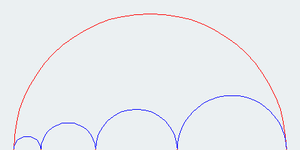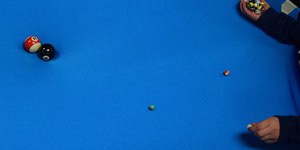Others Like “What Makes a Team's Winning Percentage Deviate from the Pythagorean Relationship?” (top 20 results)
|
How do you turn a 2-dimensional piece of paper into a 3-dimensional work of art? Origami, the classical art of Japanese paper folding, is loaded with mathematical themes and concepts. What are the common folds in origami, and how do they combine to create 3-dimensional structure? Can you classify different types of origami into classes based upon the types of folds they use? Can you show Kawasaki's Theorem, that if you add up the angle measurements of every other angle around a point, the sum…
Read more
Is winning correlated with fun? Pick a video game which has different difficulty settings, for example easy versus hard mode. Ask volunteers who have never played the game before to try it out. Some of them should use the easy mode and others should use the hard mode, this will ensure that you have a range in the amount of winning and losing among your volunteers. Keep track of how much each player is winning. Survey the volunteers to find out if they like the game. Do people who win more like…
Read more
This a straightforward, but interesting, project in geometry. It is a good first proof to try on your own. You should be able to figure it out by yourself, and you'll gain insight into a basic property of circles.
Figure 1 below shows a semicircle (AE, in red) with a series of smaller semicircles (AB, BC, CD, DE, in blue) constructed inside it. As you can see, the sum of the diameters of the four smaller semicircles is equal to the diameter of the large semicircle. The area of the larger…
Read more
Math can make you money! If you understand some basic math, you can make good decisions about how to keep, spend, and use your hard earned dollars. Try an experiment comparing the same balance in different types of bank accounts. How much better is a savings account than a checking account? What difference does the interest rate make? Which is better, an account that earns compound or simple interest? Can you compare the short and long term costs of borrowing money compared to saving the cash…
Read more
Almost all of the games we play are based on math in some way or another. Card games, board games, and computer games are designed using statistics, probabilities, and algorithms. Begin by reading about games and game theory. Then you can choose your favorite game and investigate the mathematical principles behind how it works. Can combinatorial game theory help you to win two-player games of perfect knowledge such as go, chess, or checkers? (Weisstein, 2006; Watkins, 2004) In a multi-player…
Read more
Place a desk chair (one that rotates easily on ball bearings) in the center of the room, away from any obstructions. Put your hands on your lap and have a helper give you a push to start you rotating. You'll need to quantify the results somehow. For example, your helper could measure the number of revolutions you make in 5 seconds. Now try extending your arms after your helper starts you spinning. Next, start with your arms out, and bring them in close to your body after you start…
Read more
If you know or calculate the field of view for your camera, you can use it to measure distances and the height of almost anything. It's all a matter of basic trigonometry.
Read more
Why do the planets orbit the sun without flying off into space? Do they move in perfect circles or do their orbits take a different shape? And how could you possibly do a science project about any of this—you can't do an experiment with the planets! However, you can build a model of our solar system that demonstrates the concept of gravity, using balls of different sizes to represent the sun and planets. Watch this video for an excellent introduction to the model:
Think…
Read more
Math is used by many different types of scientists to model phenomenon and evaluate data from an experiment. By building mathematical models scientists can understand how different physical, chemical, and biological processes are affected by different variables. The most important tools are: making a graph to give a visual representation of the relationships between your variables and making an equation to give a way of computing the relationships between your variables. Find a source of data,…
Read more
Soils are made of particles of different types and sizes. The space between particles is called pore space. Pore space determines the amount of water that a given volume of soil can hold. Porosity is the percentage of the total volume of soil that consists of pore space. Compare the porosity of different types of soil. Which types of soil hold the most water? Can you see this under a microscope?
Read more
|
Explore Our Science Videos
How to make an anemometer (wind speed meter)
DIY Toy Sailboat
DIY Glitter Surprise Package with a Simple Circuit







